A Novel Sliding Mode Control Scheme for a PMSG-Based Variable Speed Wind Energy Conversion System
Abstract
:1. Introduction
2. System Modeling
2.1. Wind Turbine Model
2.2. Generator Model
2.3. Pitch Angle Actuator Model
3. Development of the Control Strategy
3.1. Maximum Power Point
3.2. Rotor Speed Control Design for Region II
3.3. Pitch Angle and Electrical Torque Controller Designs for Region III
3.3.1. Pitch Angle Control Design
3.3.2. Electrical Torque Control Design
4. Simulation Results
5. Conclusions
Acknowledgments
Author Contributions
Conflicts of Interest
References
- Shafiee, S.; Topal, E. When will fossil fuel reserves be diminished? Energy Policy 2009, 37, 181–189. [Google Scholar] [CrossRef]
- Ahmad, A.; Khan, A.; Javaid, N.; Hussain, H.M.; Abdul, W.; Almogren, A.; Alamri, A.; Azim Niaz, I. An optimized home energy management system with integrated renewable energy and storage resources. Energies 2017, 10, 549. [Google Scholar] [CrossRef]
- Shi, J.; Wang, L.; Wang, Y.; Zhang, J. Generalized energy flow analysis considering electricity gas and heat subsystems in local-area energy systems integration. Energies 2017, 10, 514. [Google Scholar] [CrossRef]
- Sahin, P.; Resmi, R.; Vanitha, V. PMSG based standalone wind electric conversion system with MPPT. In Proceedings of the 2016 International Conference on Emerging Technological Trends (ICETT), Kollam, India, 21–22 October 2016; pp. 1–5. [Google Scholar]
- Li, S.; Li, J. Output predictor-based active disturbance rejection control for a wind energy conversion system with PMSG. IEEE Access 2017, 5, 5205–5214. [Google Scholar] [CrossRef]
- Housseini, B.; Okou, A.F.; Beguenane, R. Performance comparison of variable speed PMSG-based wind energy conversion system control algorithms. In Proceedings of the 2017 Twelfth International Conference on Ecological Vehicles and Renewable Energies (EVER), Monte Carlo, Monaco, 11–13 April 2017; pp. 1–10. [Google Scholar]
- Chen, Q.; Li, Y.; Seem, J.E. Bumpless transfer-based inter-region controller switching of wind turbines for reducing power and load fluctuation. IEEE Trans. Sustain. Energy 2016, 7, 23–31. [Google Scholar] [CrossRef]
- Rajendran, S.; Jena, D. Backstepping sliding mode control for variable speed wind turbine. In Proceedings of the 2014 Annual IEEE India Conference (INDICON), Pune, India, 11–13 December 2014; pp. 1–6. [Google Scholar]
- Mohammadi, E.; Fadaeinedjad, R.; Shariatpanah, H.; Moschopoulos, G. Performance evaluation of yaw and stall control for small-scale variable speed wind turbines. In Proceedings of the 30th IEEE Canadian Conference on Electrical and Computer Engineering (CCECE), Windsor, ON, Canada, 30 April–3 May 2017; pp. 1–4. [Google Scholar]
- Abir, A.; Mehdi, D.; Lassaad, S. Pitch angle control of the variable speed wind turbine. In Proceedings of the 17th International Conference on Sciences and Techniques of Automatic Control and Computer Engineering (STA), Sousse, Tunisia, 19–21 December 2016; pp. 582–587. [Google Scholar]
- Errami, Y.; Ouassaid, M.; Cherkaoui, M.; Maaroufi, M. Sliding mode control scheme of variable speed wind energy conversion system based on the PMSG for utility network connection. In Advances and Applications in Sliding Mode Control Systems; Azar, A.T., Zhu, Q., Eds.; Springer International Publishing: Cham, Germany, 2015; pp. 167–200. [Google Scholar]
- Utkin, V.; Guldner, J.; Shi, J. Sliding Mode Control in Electro-Mechanical Systems, 2nd ed.; Automation and Control Engineering; CRC Press: Boca Raton, FL, USA, 2009. [Google Scholar]
- Rivera, J.; Garcia, L.; Mora, C.; Raygoza, J.J.; Ortega, S. Super-twisting sliding mode in motion control systems. In Sliding Mode Control; InTech: Rijeka, Croatia, 2011. [Google Scholar]
- Ackermann, T. Wind Power in Power Systems; Wiley: Hoboken, NJ, USA, 2012. [Google Scholar]
- Freris, L. Wind Energy Conversion Systems; Prentice Hall: Upper Saddle River, NJ, USA, 1990. [Google Scholar]
- Wu, B.; Lang, Y.; Zargari, N.; Kouro, S. Power Conversion and Control of Wind Energy Systems; IEEE Press Series on Power Engineering; Wiley: Hoboken, NJ, USA, 2011. [Google Scholar]
- Zhang, J.; Cheng, M.; Chen, Z.; Fu, X. Pitch angle control for variable speed wind turbines. In Proceedings of the 2008 Third International Conference on Electric Utility Deregulation and Restructuring and Power Technologies, Nanjing, China, 6–9 April 2008; pp. 2691–2696. [Google Scholar]
- Eisenhut, C.; Krug, F.; Schram, C.; Klockl, B. Wind-turbine model for system simulations near cut-in wind speed. IEEE Trans. Energy Convers. 2007, 22, 414–420. [Google Scholar] [CrossRef]
- Agarwal, V.; Aggarwal, R.K.; Patidar, P.; Patki, C. A novel scheme for rapid tracking of maximum power point in wind energy generation systems. IEEE Trans. Energy Convers. 2010, 25, 228–236. [Google Scholar] [CrossRef]
- Gennaro, S.D.; Domínguez, J.R.; Meza, M.A. Sensorless high order sliding mode control of induction motors with core loss. IEEE Trans. Ind. Electron. 2014, 61, 2678–2689. [Google Scholar] [CrossRef]
- Chalanga, A.; Kamal, S.; Fridman, L.M.; Bandyopadhyay, B.; Moreno, J.A. Implementation of super-twisting control: Super-twisting and higher order sliding-mode observer-based approaches. IEEE Trans. Ind. Electron. 2016, 63, 3677–3685. [Google Scholar] [CrossRef]
- Levant, A. Robust exact differentiation via sliding mode technique. Automatica 1998, 34, 379–384. [Google Scholar] [CrossRef]
- Espinoza-Jurado, J.; Dávila, E.; Rivera, J.; Raygoza-Panduro, J.J.; Ortega, S. Robust control of the air to fuel ratio in spark ignition engines with delayed measurements from a UEGO sensor. Math. Probl. Eng. 2015, 2015, 1–13. [Google Scholar] [CrossRef]
- Castillo-Toledo, B.; Cuevas, A.L. Tracking through singularities using a robust differentiator. In Proceedings of the 2009 6th International Conference on Electrical Engineering, Computing Science and Automatic Control (CCE), Toluca, Mexico, 10–13 January 2009; pp. 1–5. [Google Scholar]
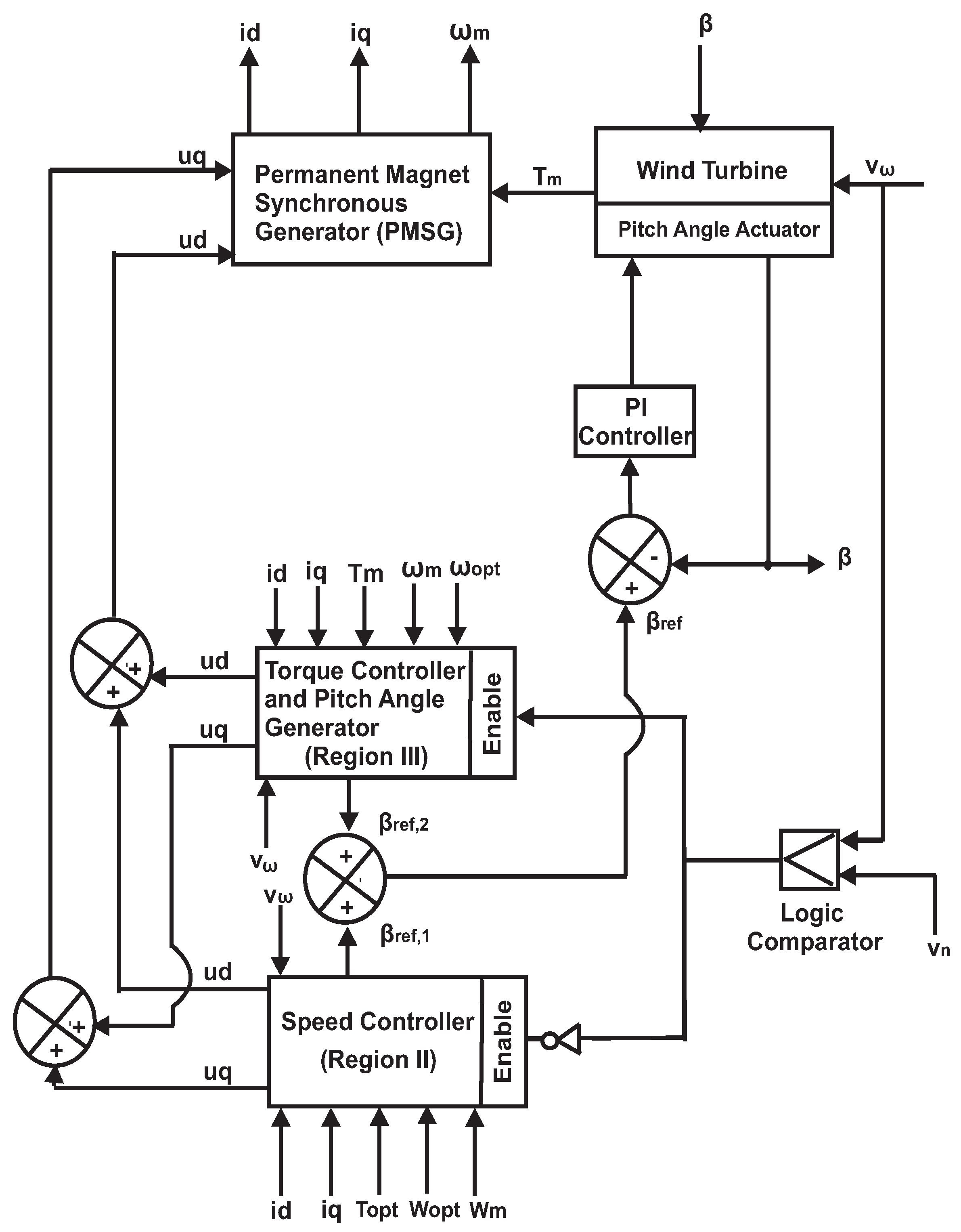
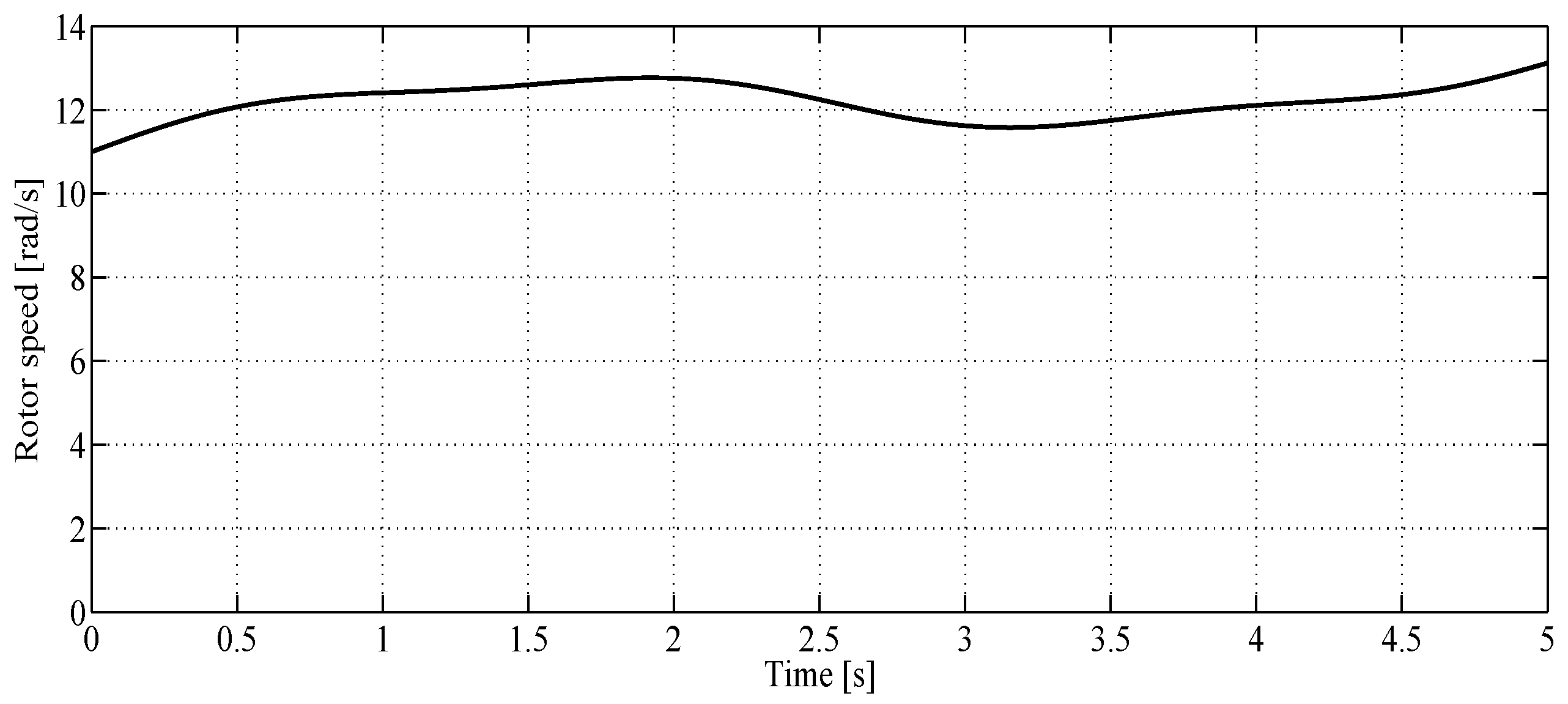

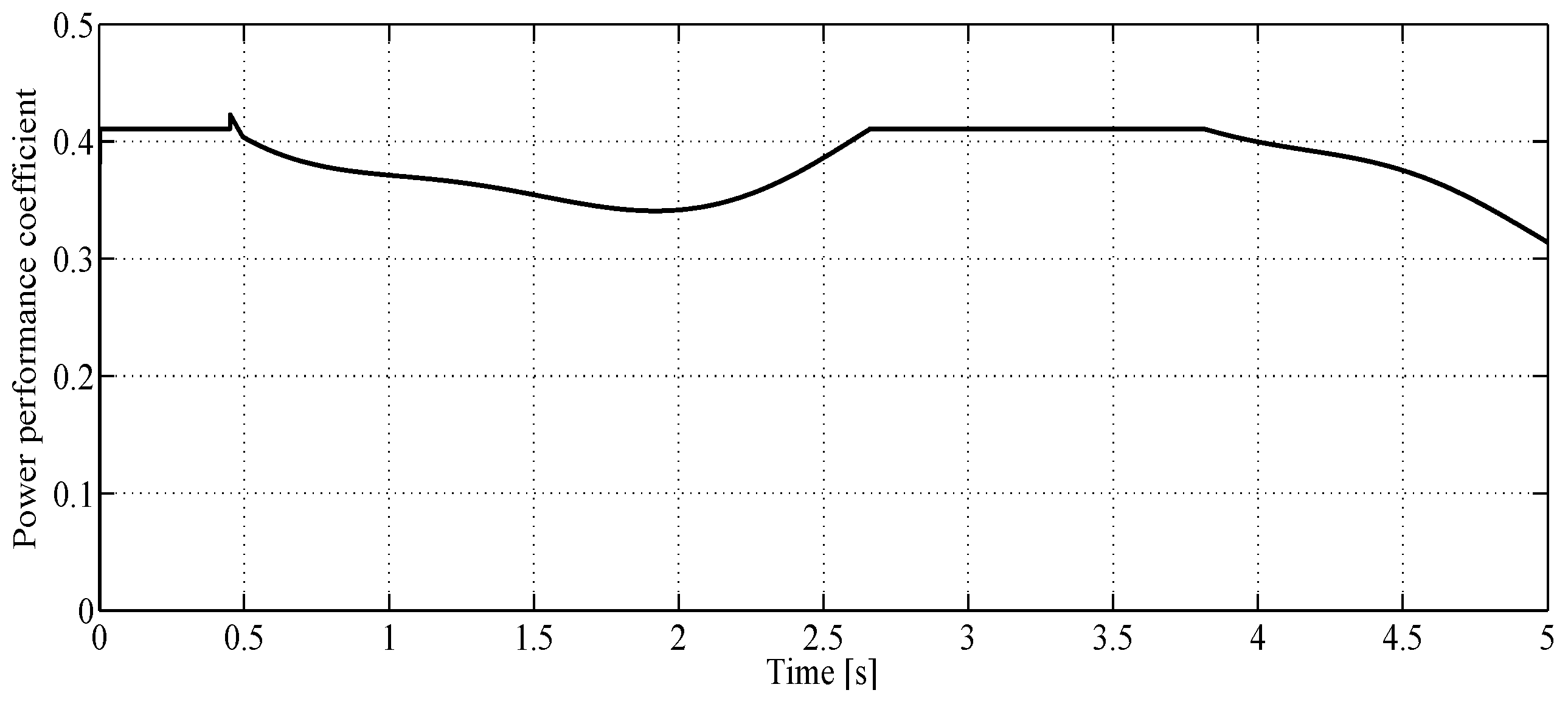

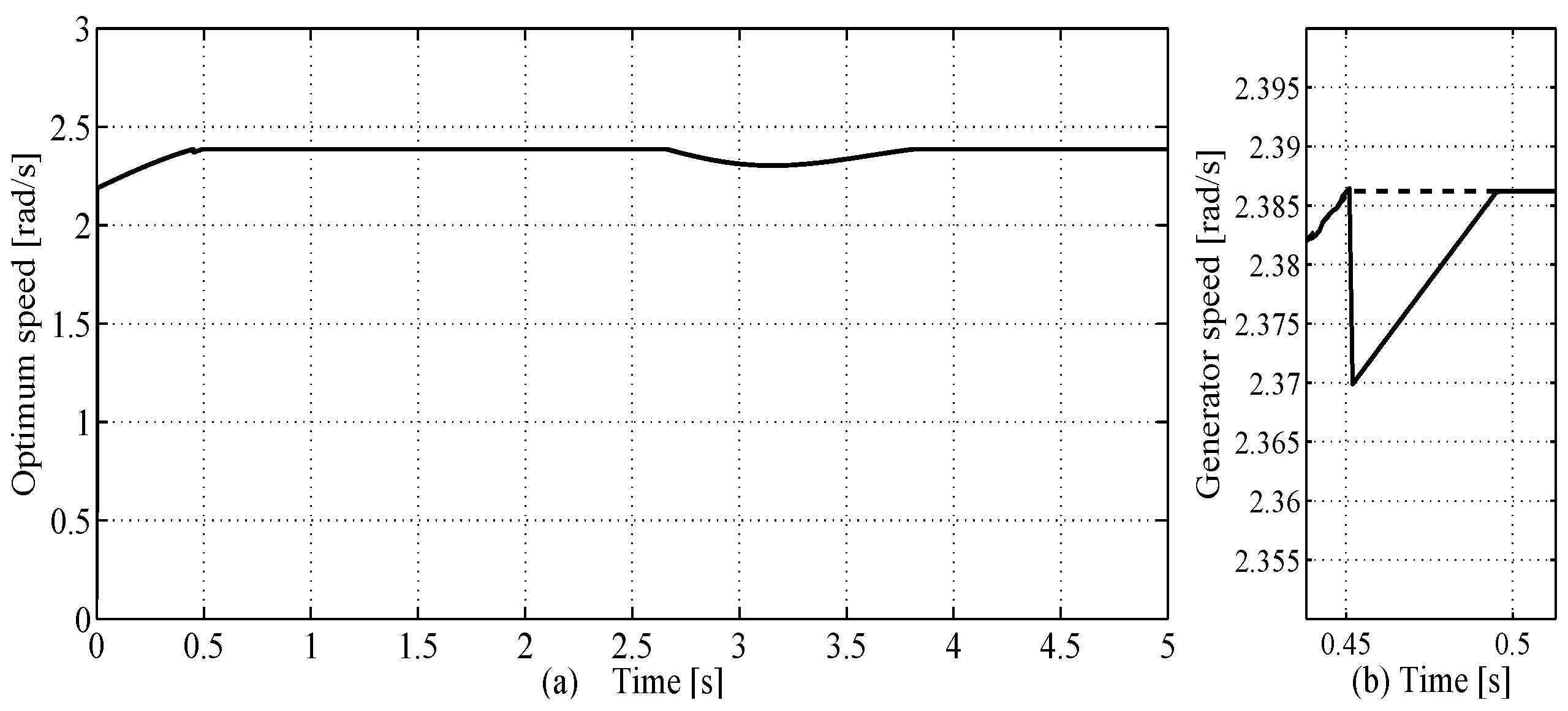
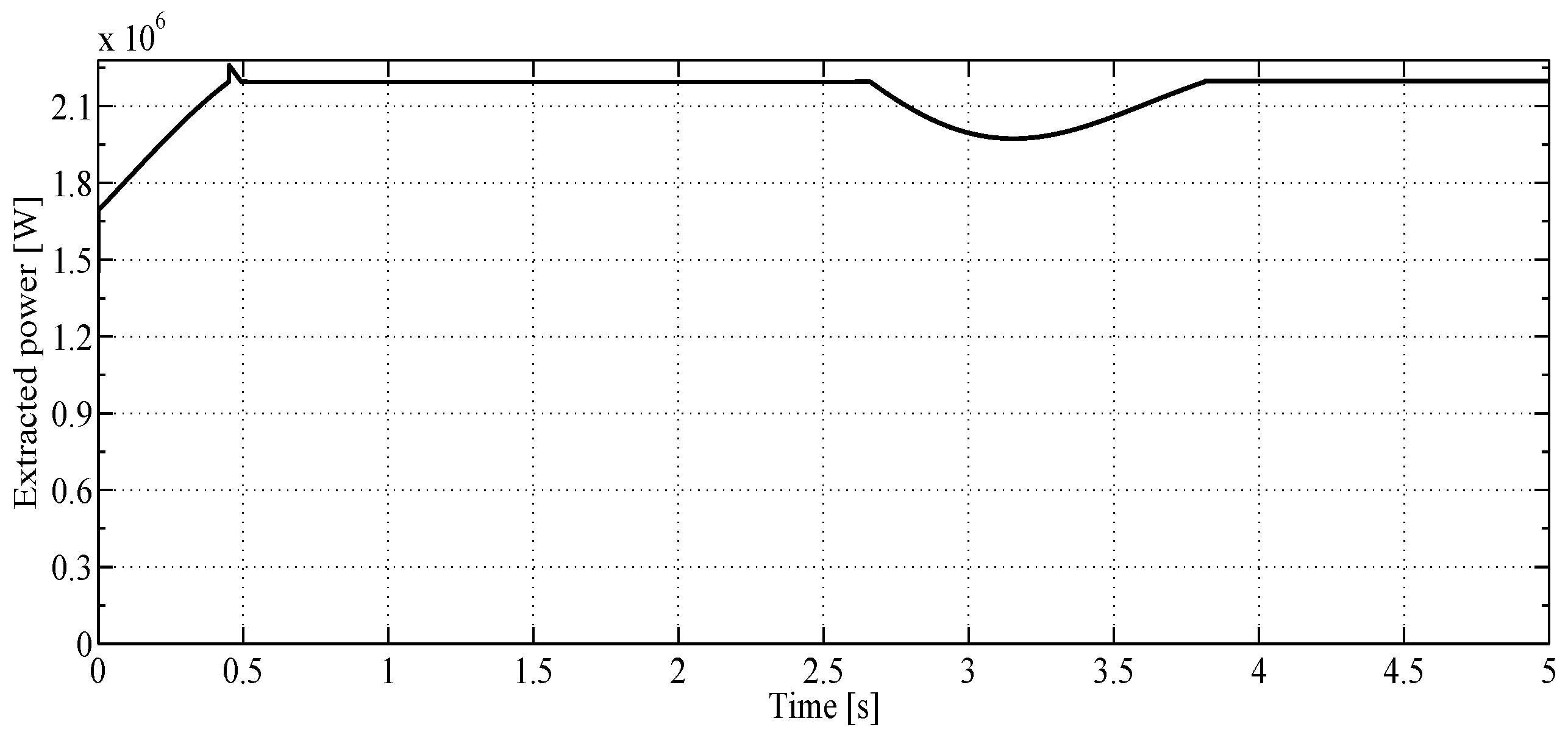
| Parameter | Value | Parameter | Value |
|---|---|---|---|
| 2.195 MW | 0.0008 | ||
| 1.23 kg/m3 | L | 0.61 H | |
| A | 5026.54 m2 | 3.86 Wb | |
| 12 m/s | 60 | ||
| 2.3862 rad/s | J | 10 kg m2 | |
| 1 s | − | − |
| Gains | Value | Gains | Value | Gains | Value |
|---|---|---|---|---|---|
| 135 | 3p /(1000L) | 600 | |||
| 150 | 20/L | 10 | |||
| 300 | 10 | 1 | |||
| 500,000 | 500 | 150 | |||
| 20 | 200 | 20 | |||
| 0.001 | 0.001 | − | − |
© 2017 by the authors. Licensee MDPI, Basel, Switzerland. This article is an open access article distributed under the terms and conditions of the Creative Commons Attribution (CC BY) license (http://creativecommons.org/licenses/by/4.0/).
Share and Cite
Chavira, F.; Ortega-Cisneros, S.; Rivera, J. A Novel Sliding Mode Control Scheme for a PMSG-Based Variable Speed Wind Energy Conversion System. Energies 2017, 10, 1476. https://doi.org/10.3390/en10101476
Chavira F, Ortega-Cisneros S, Rivera J. A Novel Sliding Mode Control Scheme for a PMSG-Based Variable Speed Wind Energy Conversion System. Energies. 2017; 10(10):1476. https://doi.org/10.3390/en10101476
Chicago/Turabian StyleChavira, Florentino, S. Ortega-Cisneros, and Jorge Rivera. 2017. "A Novel Sliding Mode Control Scheme for a PMSG-Based Variable Speed Wind Energy Conversion System" Energies 10, no. 10: 1476. https://doi.org/10.3390/en10101476





